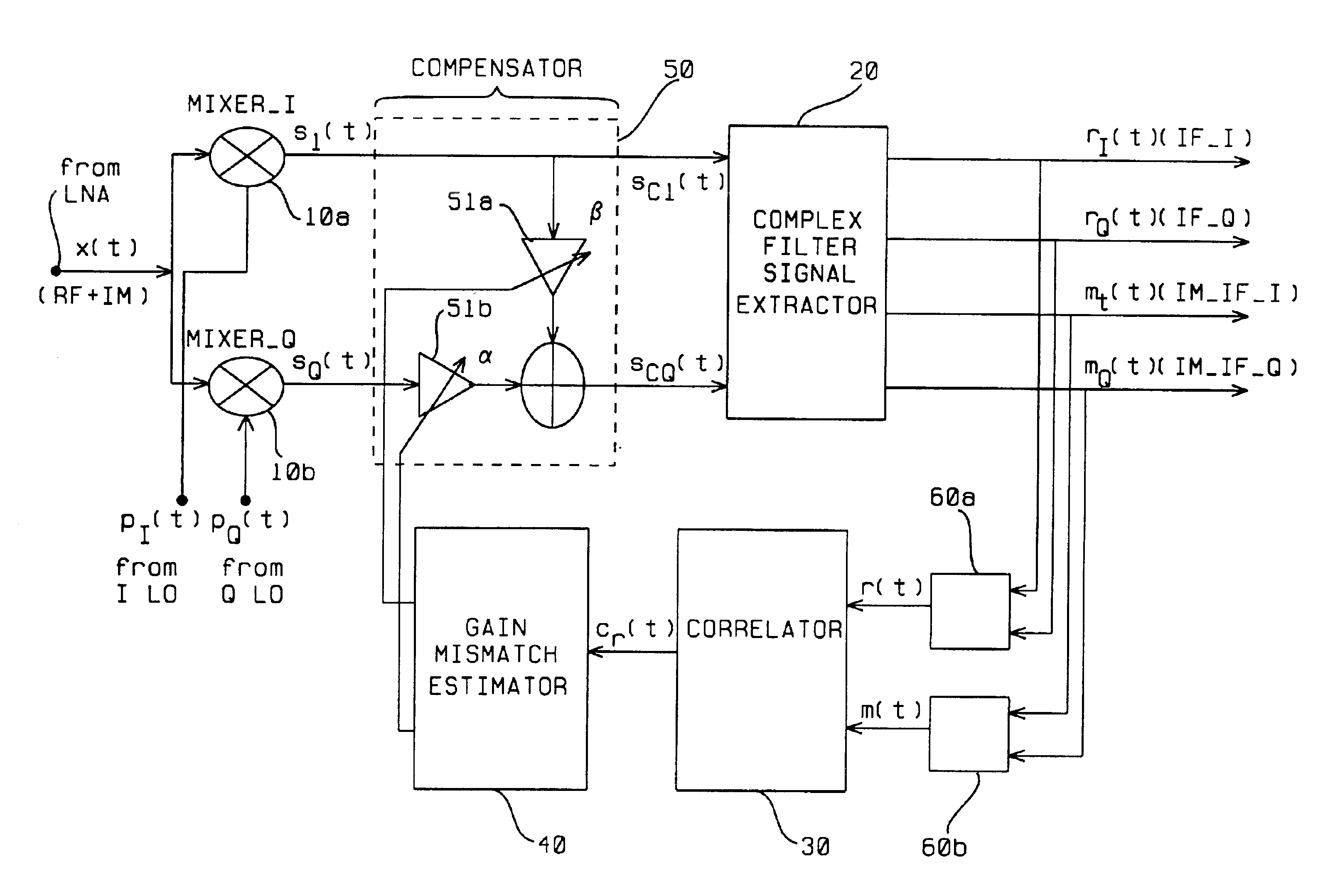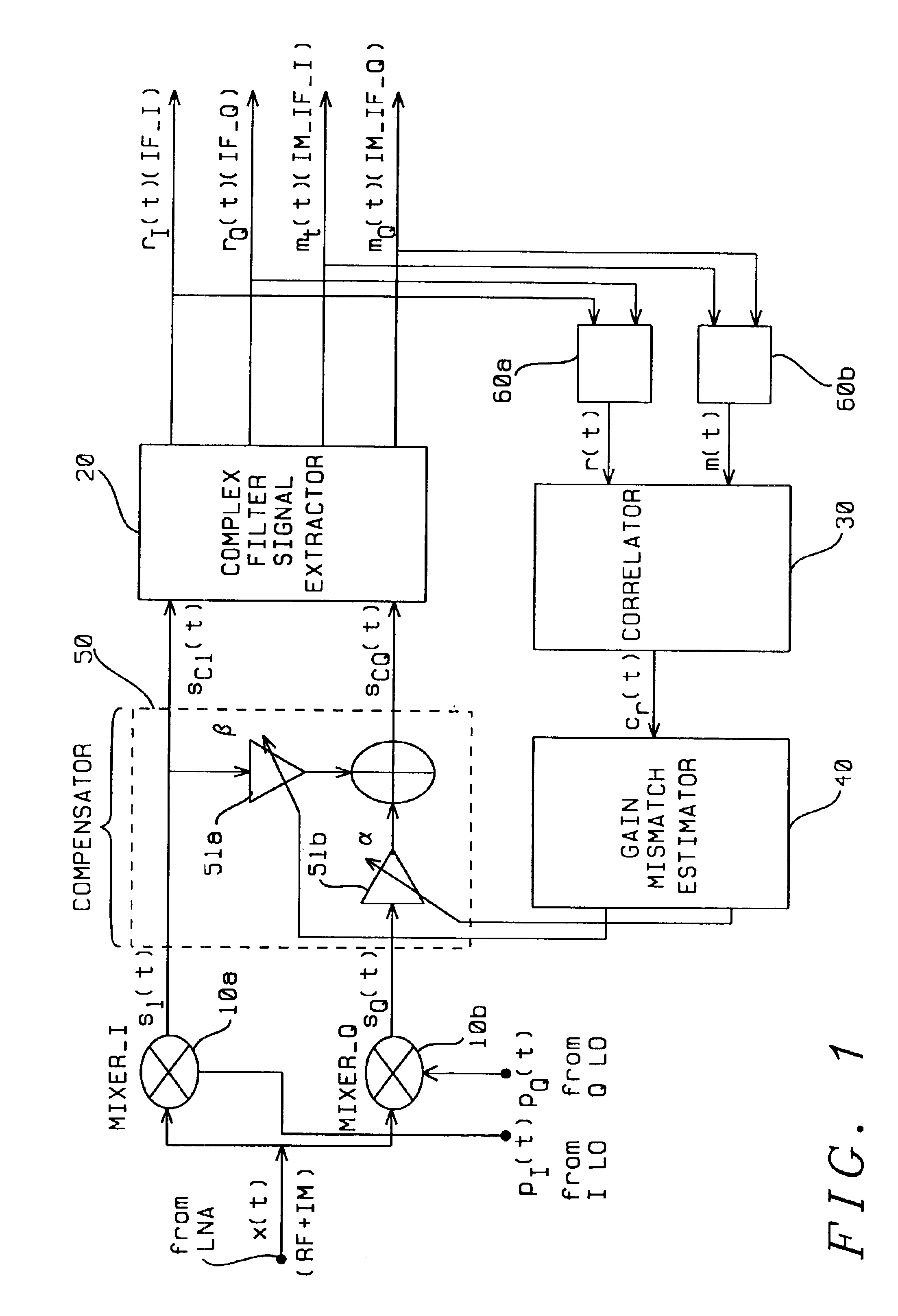Fully integrated self-tuned image rejection downconversion system
a self-tuned, downconversion technology, applied in the direction of amplitude demodulation, line-fault/interference reduction, pulse technique, etc., can solve the problems of low image rejection, i/q mismatch and cross modulation, component external and power consumption, etc., to achieve the effect of low cost and easy integration into a single chip rf+i
- Summary
- Abstract
- Description
- Claims
- Application Information
AI Technical Summary
Benefits of technology
Problems solved by technology
Method used
Image
Examples
Embodiment Construction
[0030]The proposed architecture is shown in FIG. 1. It includes two paths: the forward path and the feedback path. The forward path is composed of quadrature I and Q (I / Q) mixers 10a, 10b (with two I / Q local oscillators—LOs) and a complex filter signal extractor 20, which is used for frequency downconversion and image rejection. The feedback path is composed of a correlator 30, a gain mismatch estimator 40 and a compensator 50 (with two variable gain amplifiers 51a and 51b) coupled between the I / Q mixers and the, which is used for detecting, estimating and canceling the I / Q mismatches between I / Q mixers and I / Q LOs. Coupled between the complex filter signal extractor and the correlator are blocks 60a and 60b for combining signals from the complex filter signal extractor.
[0031]Referring to FIG. 1, the basic principle of the invention is as follows.
[0032]In the forward path, the input signal x(t), composed of desired RF and image (IM) signal (indicated as RF+IM), comes from a low nois...
PUM
 Login to View More
Login to View More Abstract
Description
Claims
Application Information
 Login to View More
Login to View More - R&D
- Intellectual Property
- Life Sciences
- Materials
- Tech Scout
- Unparalleled Data Quality
- Higher Quality Content
- 60% Fewer Hallucinations
Browse by: Latest US Patents, China's latest patents, Technical Efficacy Thesaurus, Application Domain, Technology Topic, Popular Technical Reports.
© 2025 PatSnap. All rights reserved.Legal|Privacy policy|Modern Slavery Act Transparency Statement|Sitemap|About US| Contact US: help@patsnap.com



